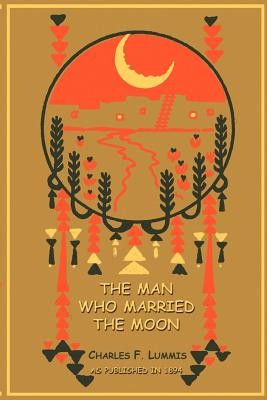
- We will send in 10–14 business days.
- Author: Charles F Lummis
- Publisher: Digital Scanning
- Year: 2001
- Pages: 252
- ISBN-10: 1582182698
- ISBN-13: 9781582182698
- Format: Softcover
- Language: English
- SAVE -10% with code: EXTRA
Reviews
Description
The Man Who Married The Moon is a collection of Pueblo Indian folk stories by renowned southwestern author, librarian, historian and archeologist Charles F. Lummis. Born in Lynn, Massachusetts and a graduate of Harvard University, Lummis moved to New Mexico because of lung disease. There he lived for five years in the quaint village of Isleta, the chief city of the Tee-Wahn tribe (spelled Tigua by Spanish authors), located in the southernmost part of the Pueblo lands, in what is now New Mexico.
As a member of the community, Lummis learned their language, customs and myths and has written down, unchanged and unembellished, this series of Indian fairy tales. His interest was not only in the folk stories themselves, but also in the manner in which they were handed down. In an oral tradition spanning the ages, the elders would tell the tales to all and pass on the beliefs, customs and laws of this nation. Lummis would sit in the great adobe living-room of his neighbor and listen as the withered, wrinkled old man, surrounded by his children, grand-children and great grand-children, captivated all who listened to his deep, musical voice.
An unhappy home was almost an unknown amongst the Tee-Wahn. There was extraordinary and universal affection for children and respect for elders. Their secret, inner religion is one of the most complicated on earth. They do nothing without a reason, and can explain any observation in their own superstitious way. Lummis' hopes when he wrote down these stories were not only in telling them, but to preserve the amusements, history, beliefs, customs and laws of a truly remarkable society.
- Author: Charles F Lummis
- Publisher: Digital Scanning
- Year: 2001
- Pages: 252
- ISBN-10: 1582182698
- ISBN-13: 9781582182698
- Format: Minkšti viršeliai, minkšti viršeliai
- Language: English English
The Man Who Married The Moon is a collection of Pueblo Indian folk stories by renowned southwestern author, librarian, historian and archeologist Charles F. Lummis. Born in Lynn, Massachusetts and a graduate of Harvard University, Lummis moved to New Mexico because of lung disease. There he lived for five years in the quaint village of Isleta, the chief city of the Tee-Wahn tribe (spelled Tigua by Spanish authors), located in the southernmost part of the Pueblo lands, in what is now New Mexico.
As a member of the community, Lummis learned their language, customs and myths and has written down, unchanged and unembellished, this series of Indian fairy tales. His interest was not only in the folk stories themselves, but also in the manner in which they were handed down. In an oral tradition spanning the ages, the elders would tell the tales to all and pass on the beliefs, customs and laws of this nation. Lummis would sit in the great adobe living-room of his neighbor and listen as the withered, wrinkled old man, surrounded by his children, grand-children and great grand-children, captivated all who listened to his deep, musical voice.
An unhappy home was almost an unknown amongst the Tee-Wahn. There was extraordinary and universal affection for children and respect for elders. Their secret, inner religion is one of the most complicated on earth. They do nothing without a reason, and can explain any observation in their own superstitious way. Lummis' hopes when he wrote down these stories were not only in telling them, but to preserve the amusements, history, beliefs, customs and laws of a truly remarkable society.


Reviews